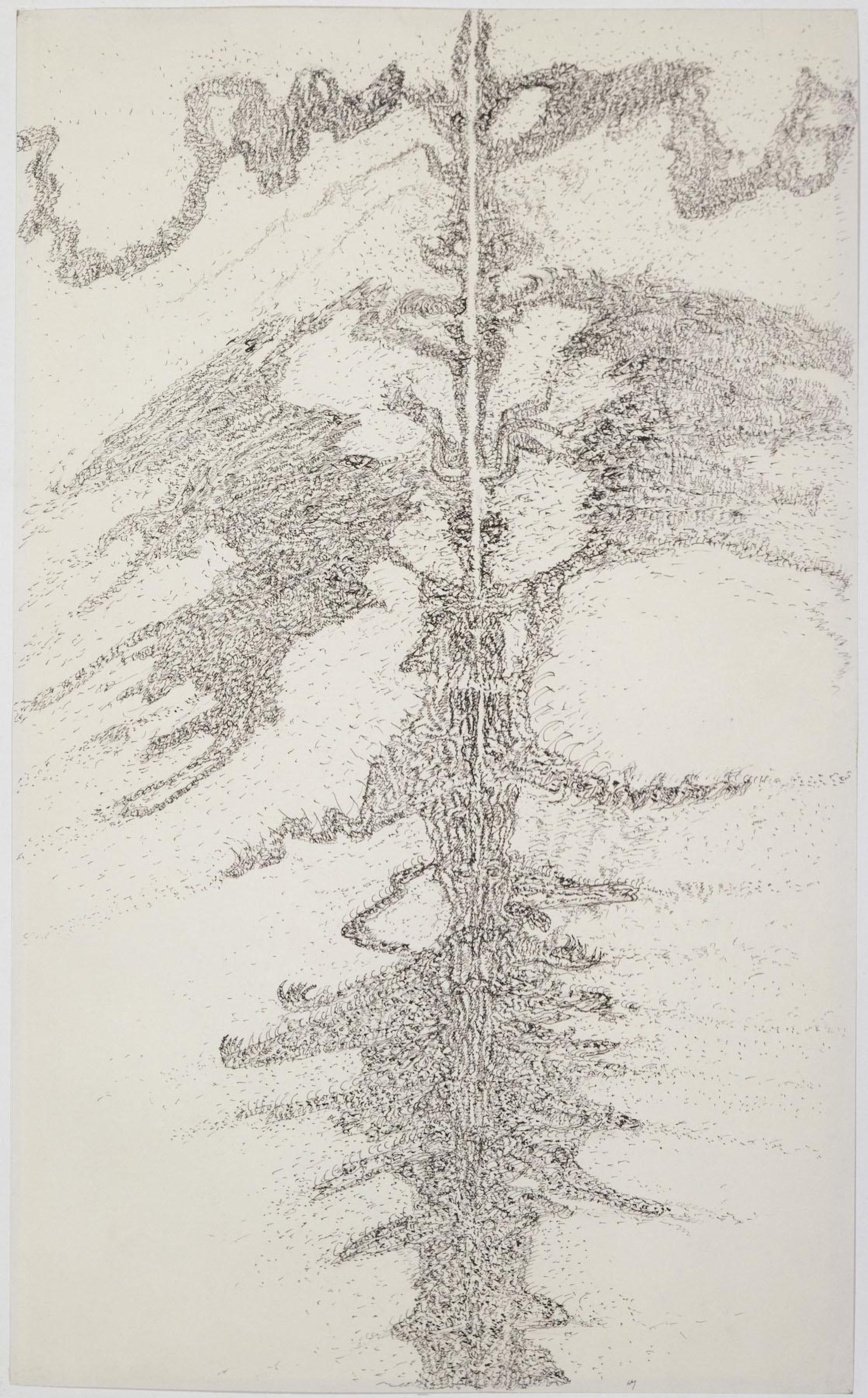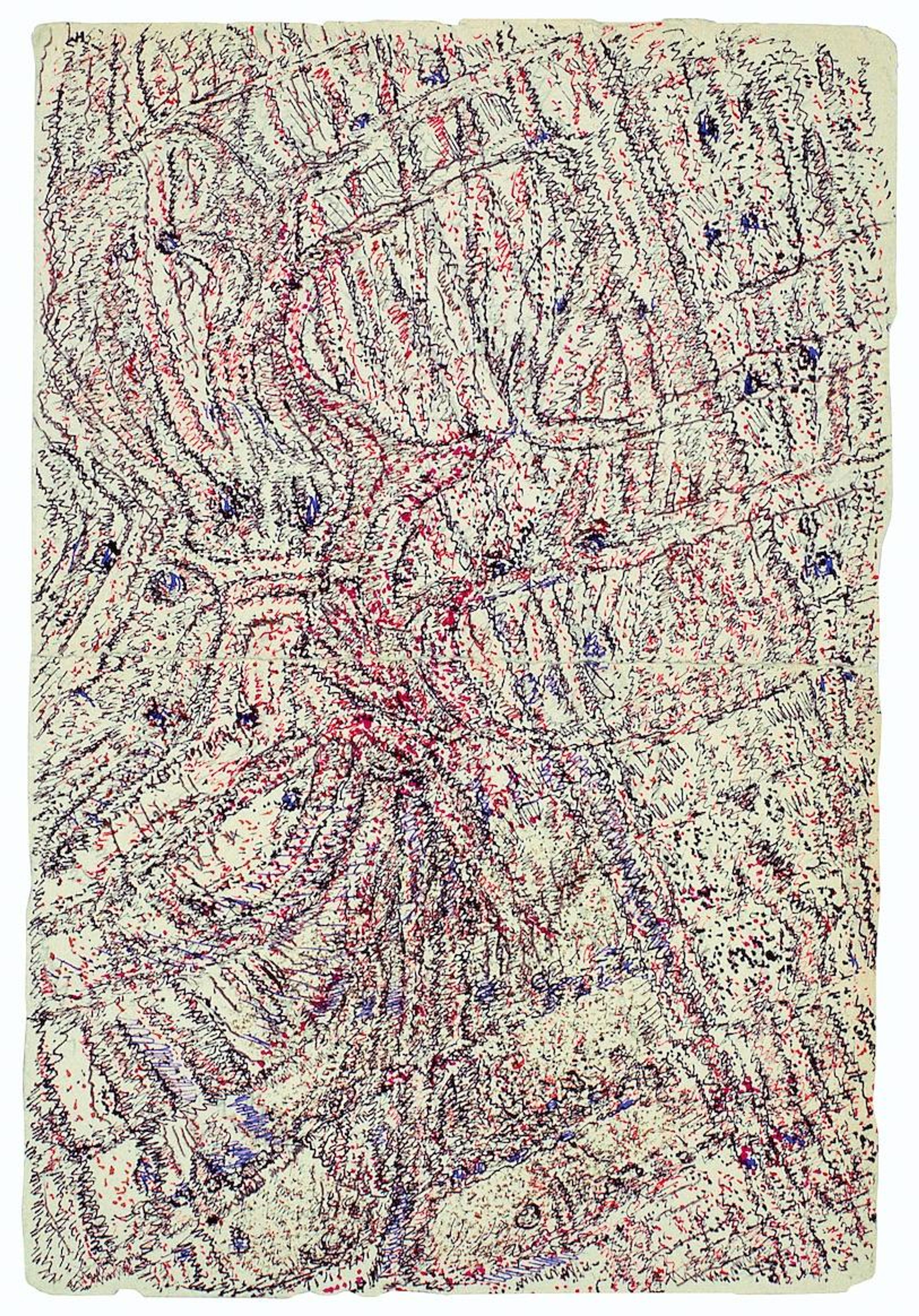Our ancestors saw spirits everywhere. They imbued the trees around them and the sky with personality and agency to help explain things they didn’t understand. Nostradamus stared into the surface of a pool of water to try and find a deeper meaning to the world. More recently, people have looked for messages and visions with the aid of objects like crystal balls, Ouija boards, and scrying mirrors. In our mod.ern era of Gorilla Glass and preci.sion-crafted alumin.ium, it often seems on the surface like there isn’t much room for spiritual connection. But there are more and more indicators of a reversal of the “disenchantment of the world” ana.lysed by Max Weber around a hundred years ago, and its re-enchantment is taking some unex.pected forms.
In recent years there has been a blurring of the lines between those invested in emerging technol.ogies such as artificial intelligence and groups exploring their spirituality in ayahuasca cir.cles and other still more clandestine ceremo.nial practices that are emblematic of the cur.rent running through our third psychedelic age. The confluence of the worlds of technology and spirituality has given rise to an emerging group of practices that coalesce around the term algo seance. As a descriptor of something ushered in between those prepared to embrace something that remains still to be known, it seems most use.ful not to define it too closely: it is a form with.out edges. “The algo seance is the evocation of spirit contact through technological production, which is really our materialist, technologised civ.ilizational impulse to find consciousness every.where,” says Kenric McDowell, who leads the Art.ists + Machine Intelligence program at Google
Research. “As people living in a materialist twenty-first-century culture, we’ve elim.inated contact with spirit from our lives and are looking to technology to reflect consciousness back to us. Our tools become the mirror of a condition that exists everywhere: a mirror of nature. It’s us looking into that mirror hoping to find spirit and con.sciousness through our fetishistic rela.tionship with tech.nology, hoping to find exactly what the materialist world-view has removed from our lives.”
In ancient Greece, someone seeking guidance may have turned to an oracle like the one at Delphi – a point of pilgrimage for those seeking help and advice. Today, technology is fulfilling that function as truth is increasingly conflated with mathematical proofs within our machines. Artificial intelligence networks are making predictions about the future based on big data, while digital “oracles” determine the truth through blockchain-powered prediction markets. Serving as trusted entities, these oracles validate claims about the real world, but in their names – “Augur”, “Gnosis” – they suggest that a summoning of forces with more ancient origins is also in play throughout the venture capital– fueled technological progress of the present.
The Ouija board gives way to a machine-learning algorithm; the crystal ball is replaced with the black mirror of a smartphone screen.
Algo seance is both the unspoken man.ifestation and the ritualised practice of look.ing for meaning in lines of code or the output of neural networks. Some.times it is chan.nelled with greater intention through the influence and insights of hallu.cinogens coupled with visual expo.sure to the rapid output of neural net imaging soft.ware; at other times simple breathing techniques can suf.fice to bring into view previously hidden knowledge about the nature of the world from these same emer.gent datasets.
The Ouija board gives way to a machine-learning algo.rithm; the crystal ball is replaced with the black mirror of a smartphone screen. If it can lead to zones of dissolution or surrender far from all known realities, walking the path of the algo seance can also be a profoundly challenging encounter with the self. “It was deeply disturb.ing,” says Berlin-based writer and artist Emily Segal of her first algo seance. While it would be inappropriate to recount such an intense and personal experience in greater detail, her words should be taken as a warning: “It shook me to my very core.”
During his short life the ethnobotanist and prophet of the second psychedelic age Ter.ence McKenna spoke at length of an “archaic revival” that was beginning to unfold in the late twentieth century, suggesting that the next plot twist, the one which is now in pro.gress, might reveal to us a degree of complexity and sophistication in the systems of knowl.edge that the secu.lar Enlightenment chose to denigrate, colonise, and leave behind. While some current and poten.tial developments – brain implants that help you think like a machine, for example – might seem part of that same limited world-view and point to humanity’s future as cold and comput.erised, other shifts connected to the
practices of algo seance suggest we are turning towards a more spiritual, connected understand.ing of our place in the world: one that, this time, is driven by technology.
As Erik Davis points out in his 1998 book Techgnosis: Myth, Magic and Mysticism in the Age of Information, science and tech.nology have often overlapped with the mysti.cal. Newton, famously, was an alchemist. The
sixteenth-century mathematician, astronomer, astrologer, and occult philosopher John Dee likewise drew no distinction between the sci.entific and magical aspects of his work. “Dee wanted to know everything and he stopped at nothing to look for sources of information and inspiration,” says Bill Sherman, director of the Warburg Institute in London. “This meant that he was open to magic as well as to what we now call science; it meant that his alchemical labo.ratory sat next to his massive library – creating perhaps the world’s first libratory.”
Rather than being forces masquerading as an antagonistic duality, technological pro.gress and spirituality are and always have been entwined. They are two sides of the same coin. The overlap between the spiritual and the sci.entific has continued, albeit often intention.ally under the radar. Doreen Valiente, who has been called the mother of modern witch.craft, was recently revealed to have worked as a code-breaker at Bletchley Park during World War II, where the work of computer scien.tist Alan Turing and others paved the way for modern computer algorithms and software. Jack Parsons, a rocket engineer, inventor, and cofounder of the Jet Propulsion Laboratory in California (which from 1936 on laid the foun.dation for our modern space programmes) was a devout follower of the occult philosophy of Thelema, which had been founded in 1904 by the infamous Aleister Crowley. In the 1950s and 60s, countercultural scientists such as John C. Lilly used drugs and sensory deprivation to explore the nature of human consciousness and interspecies communication.
Even Silicon Valley is rooted in spirit.uality. The current trend for microdosing LSD to encourage creativity is but one example of its links to the San Francisco hippies of the 60s. “Silicon Valley … has, at its root, a very eso.teric and spiritual component,” says McDowell. “The generation that birthed Silicon Valley was inspired by their entheogenic experiences with LSD.” Apple’s founder Steve Jobs is a case in point. “Taking LSD was a profound experience, one of the most important things in my life,” he once revealed. “LSD shows you that there’s another side to the coin, and you can’t remember it when it wears off, but you know it. It reinforced my sense of what was important – creating great things instead of making money, putting things back into the stream of history and of human con.sciousness as much as I could.”
For artist Jenna Sutela, the influence of algo seances both as milieu and a spiritual practice has revealed a connection to the hid.den forces that govern our lives, whether they’re intractable machines or invisible life.forms. “[The point is] trying to connect with or even just sensing other intelligences – be they machines or, for example, ancient bacteria that
Like generations before us, we are trying to forge a connection with the environment, trying to make sense of a world we’ve built but don’t really understand.
thrive in space as well as in our microbiomes. It’s about developing new sensibilities in light of novel experience,” she says.
Sutela’s most recent work, nimiia cétiï (2018), combines cutting-edge technology with obscure and ancient life forms in a spiritual journey inspired by a late nineteenth-century seance in which the French medium Hélène Smith communicated with Martians, as well as by modern missions to the red planet. In the artist’s audiovisual installation, video footage of extremophile bacteria that are capable of life on the harsh Martian surface is processed by a neural network. Audio interacts with the bacterial movements: what you can hear is the computer tuning into something like Smith’s early Martian language. The network produces a short block of sound that it thinks matches each frame of the video or the configuration of bacteria in it. The result is eerie.
“In nimiia cétiï, the computer is a medium, channelling messages from an entity that usually cannot speak: Bacillus subtilis, possibly a Martian bacterium and the main ingredient of natt, or fermented soybeans,” Sutela explains. “But the work is also about intelligent machines as aliens of our creation. There’s an interesting link between the pro.ject of talking with aliens and the problem of talking with machines. We built (at least some of ) the aliens ourselves and now the challenge is to understand the nonhuman condition of these machines that work as our interlocutors and infrastructure.”
What is emerging is a Gaia hypothesis of a single planetary consciousness, one enabled not by nature alone but by a symbiosis between it and vast sensor networks and autonomous artificial intelligence. Escalated across multi.ple strata, as landmasses and bodies of water (such as the Whanganui River in New Zealand) are granted their own legal personhoods, we are entering a phase transition towards an increasingly accepted and universalised ani.mist worldview akin to more ancient notions of spirit contact. The emergence of the algo seance can therefore be seen as part of a more significant awakening that lurches between magical renaissance and magical acceleration-ism. We’re looking to the past, while plunging headlong into the future, and in the process we are witnessing the collapse of linear time and the disintegration of everything that used to count as consensus reality.
“In a sense, all intelligence is artificial – and always has been,” says Sherman. “What counts of a legitimate source, a productive method, a way of earning money or exercising influence, is always being renegotiated. And we leave out the things we cannot currently see or understand at our peril.” For him, it’s no coincidence that algo seances are emerg.ing at this point in history. “The ‘seance’ has flourished at times when we have felt both the absence of knowledge and the presence of forces beyond our control: Dee lived in such a time and so do we,” he says.
Like generations before us, we are trying to forge a connection with the envi.ronment, trying to make sense of a world we’ve built but don’t really understand. But while scrying mirrors and crystal balls merely reflected our own gaze back towards our.selves, the algo seance potentially offers some.thing more – a closer connection to artificial intelligences that we’ve built but can’t fully comprehend. There have always been gods in our machines, but only now have we found a crack that opens up the possibility of entering into their fevered dreams.
HANS ULRICH OBRIST is Artistic Director of the Serpentine Galleries in London.
BEN VICKERS is CTO of the Serpentine Galleries in London and co-founder of Ignota Books.
– This text appears in Spike #58 . You can buy it in our online shop –




